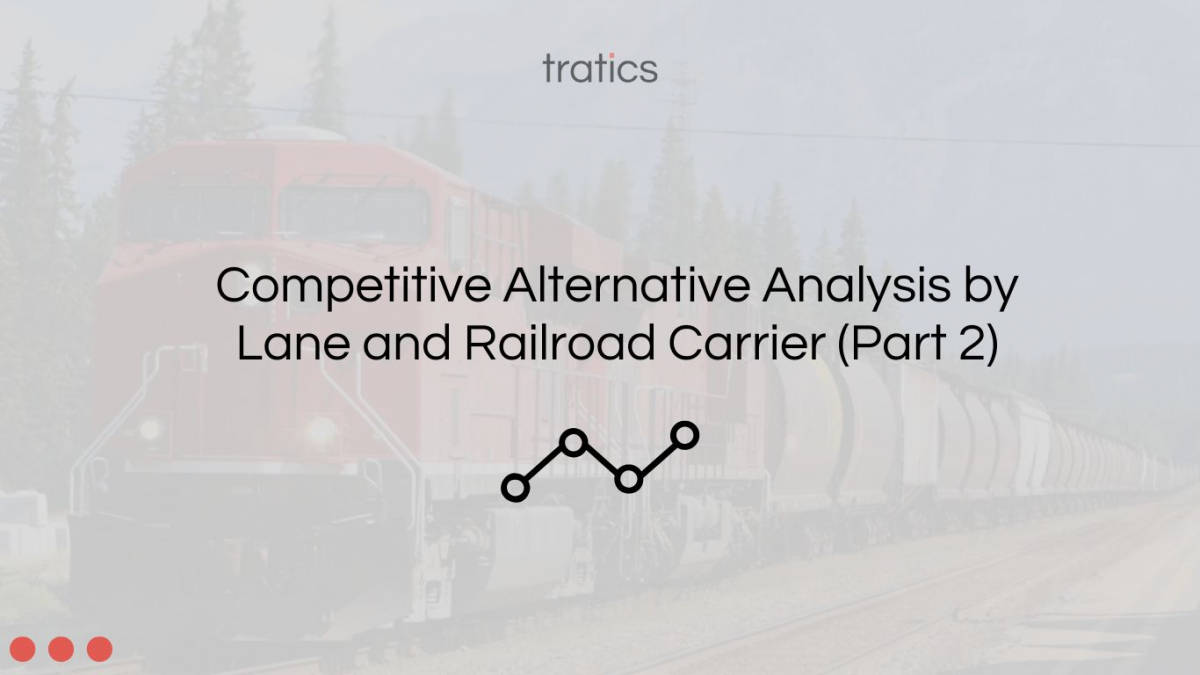While traditional rate analysis that includes comparison to tariff rates, and railroad cost/profit analysis has its place in overall rate analysis, this alone is not going to take you far in rate negotiations. The railroad reasoning for higher rates is going to be a vague “we price to the market”. Therefore, shippers need to go another step to identify their alternative transportation options. This includes analyzing rail options with other railroads, evaluating alternative sourcing options, and building a transload program lanes.
Rail Options for Each Lane
When analyzing rail options for each lane, it's important to consider the different railroads, routes, and rates available. Each lane will have its own unique set of options, and it's important to consider each one to determine the best option for your specific needs.
Railroads: The first step in analyzing rail options is to identify the different railroads available in each lane. There are currently 6 major major railroads in North America include BNSF, Union Pacific , CSX, Norfolk Southern, Canadian National and Canadian Pacific Kansas City. Each of these railroads will have its own routes, rates, and services, so it's important to understand the differences between them.
Routes: The next step is to identify the different routes available for each lane. This includes considering the origin and destination points, as well as any intermediate stops along the way. It's important to choose a route that is both cost-effective and efficient, taking into account factors such as transit time, distance, and any potential disruptions.
Rates: The final step in analyzing rail options is to consider the different rates available for each lane. This includes both the base rate and any additional fees, such as fuel surcharges or accessorial charges. It's important to understand the different rate structures for each railroad and each route so that you can make an informed decision about the best option for your needs.
Consider Alternative Routes Using Rule 11 Rates and Routing
If you are shipping in lanes that include multiple rail carriers, it's crucial to consider alternative routes. Sometimes there are much cheaper overall prices for a move using alternative gateways. The Tratics softawre Rule 11 algorithm is a powerful tool for evaluating different routes and determining the best option for your needs. This algorithm considers factors such as transit time, distance, and cost, and provides a comprehensive analysis of all available options.
Evaluate Sourcing Options
In addition to considering rail options, it's also important to evaluate your matetrials sourcing. This includes analyzing whether you can ship the same product out of other plants and whether this would be a cost-effective option. If shipping out of another plant is not an option, it may be necessary to consider alternative sourcing strategies, such as using a different supplier. Building a larger list of potential suppliers, if possible, gives you the ability to adjust your business to changes in the cost of shipping freight.
Build Transload Options and Prices for Captive Lanes
Finally, it's important to build transload options and prices for captive lanes. A captive lane is a lane in which there is only one shipping option available, typically because there is only one railroad that services that lane. In these cases, transloading options and prices can help you make an informed decision about the best way to ship your products. Transloading involves transferring goods from one mode of transportation to another, and it can often provide cost savings and increased efficiency compared to shipping directly on a single mode of transportation.
Having a robust competitive transportation alternative list and strategy is going to help put you in the driver’s seat during rail rate negotiations. By taking the steps outlined here, you can ensure that you are maximizing cost savings and transit time for your company.


